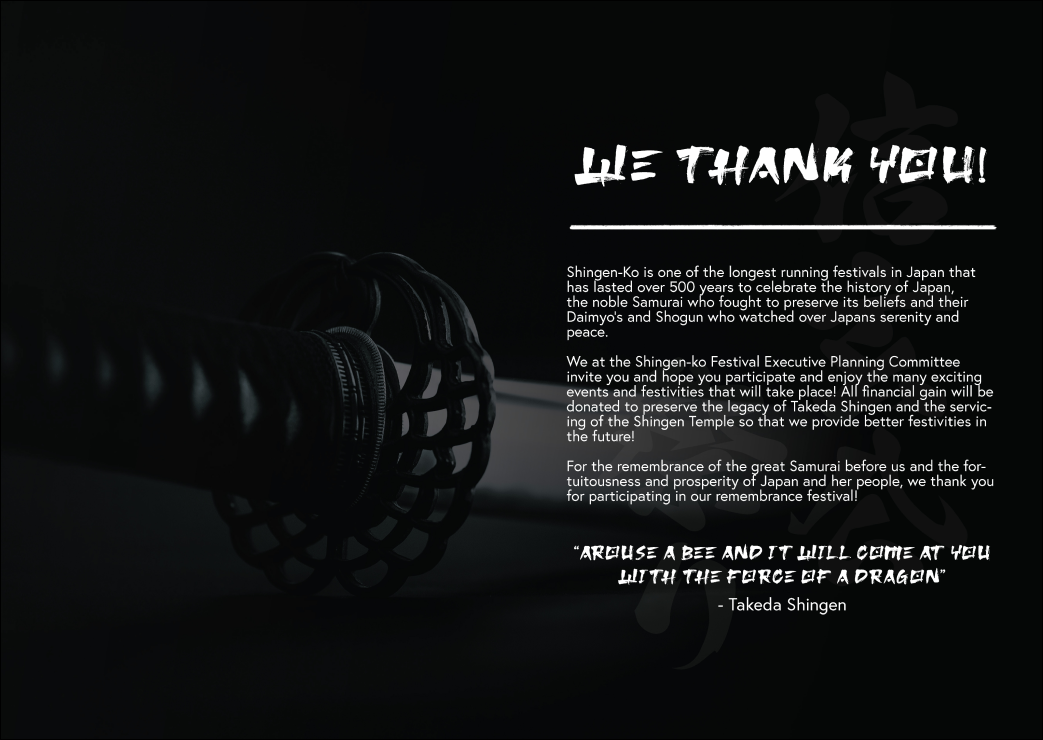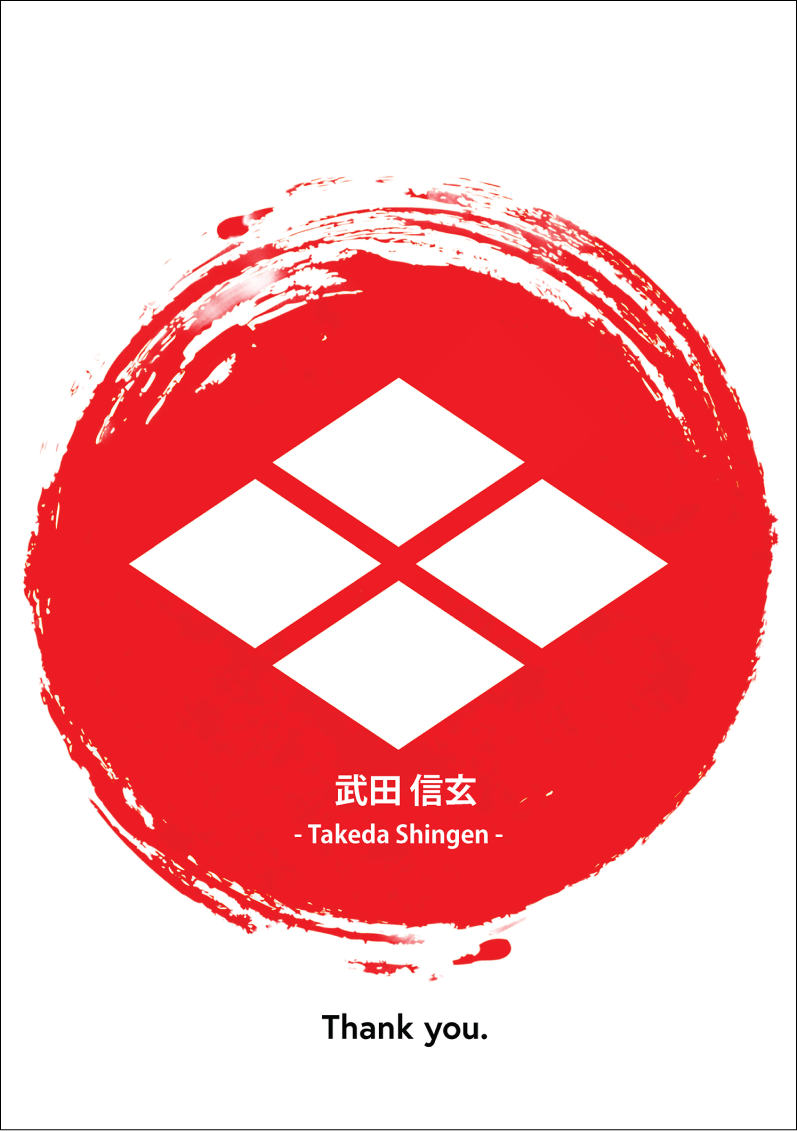Shingen-ko
Shingen-Ko is a festival held annually in Kofu City, Yamanashi Prefecture to commemorate the legacy of the renowned warrior Takeda Shingen who was a renowned warrior and samurai. The Project in question was a task that focused on recreating the Shingen-Ko Event Booklet that is handed out annually for festivalgoers to learn about the history of Shingen-Ko alongside the event list and schedules of all of the events that take place during the Festival and FAQ of the festivities.
Project Goal
The goal of the project was to create a visually appealing and informative booklet that would engage festivalgoers and help them navigate the various events and activities during the festival. (all images and assets belong to their respective copyright holders.)
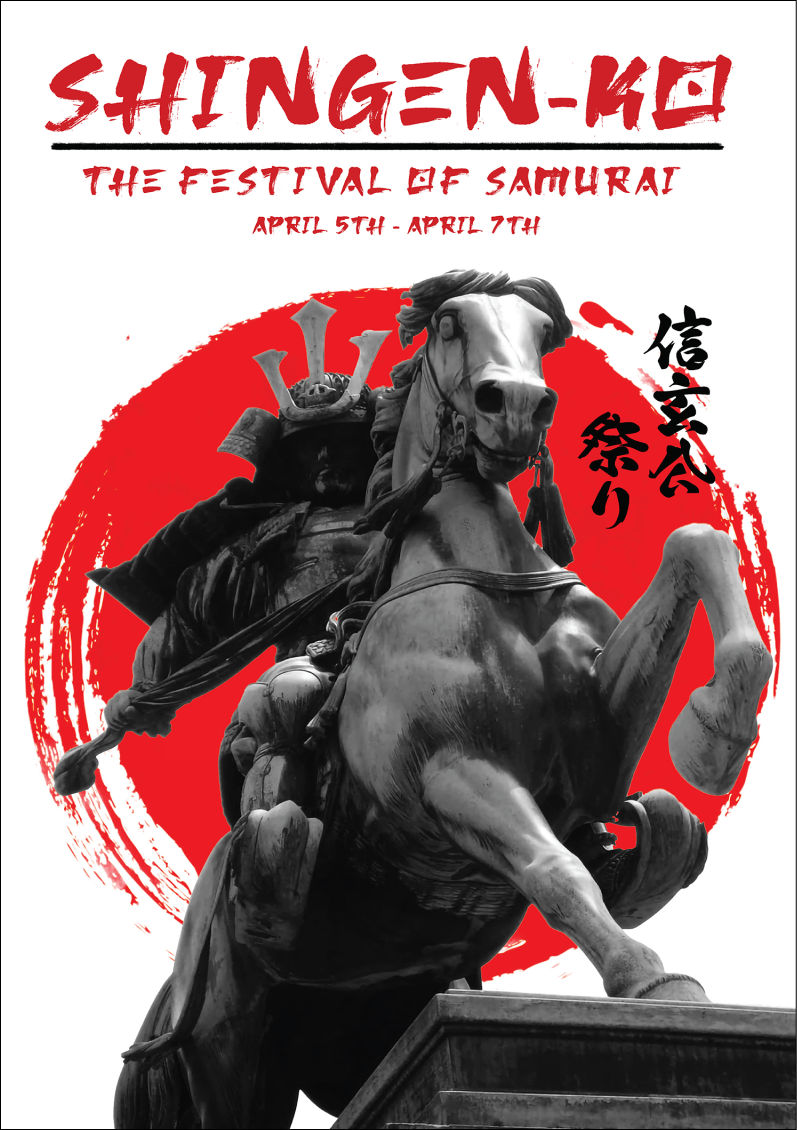
Thorough Research
The first step in the project was to research the history of Shingen-Ko and gather any relevant information about the festival. This included learning about Takeda Shingen's achievements and his significance in Japanese history, as well as understanding the cultural importance of the festival itself.
Researching the task was challenging as the Festival itself is typically a local affair and information was scarce; however translating information and reaching out to historical research officials of the Yamanashi Prefecture provided valuable sources of information that was fruitful and both historically accurate.


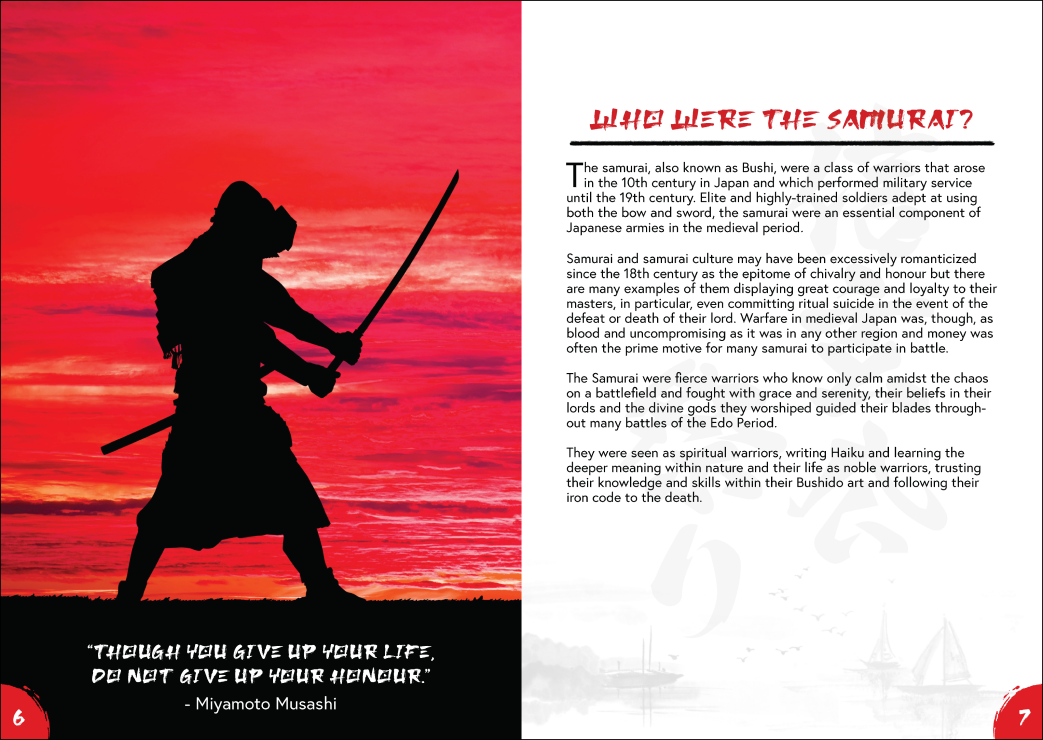
Aesthetic & Design
After gathering the necessary information, the next step was to design the layout of the booklet. This involved choosing a suitable format and deciding on the overall aesthetic, including the colour scheme, typography, and imagery. The booklet was designed to have a cohesive look and feel that would reflect the rich history and tradition of Shingen-Ko.
The Aesthetic and Design of the Project itself was chosen and created to perfectly represent the ancient culture of Japan during the Edo Period, using strong colour representation of the Japanese Flag and the Nations colours of white, black and red; alongside symbolism of the ancient Samurai and using a typography that fits the cultural period and artistic direction of the project.
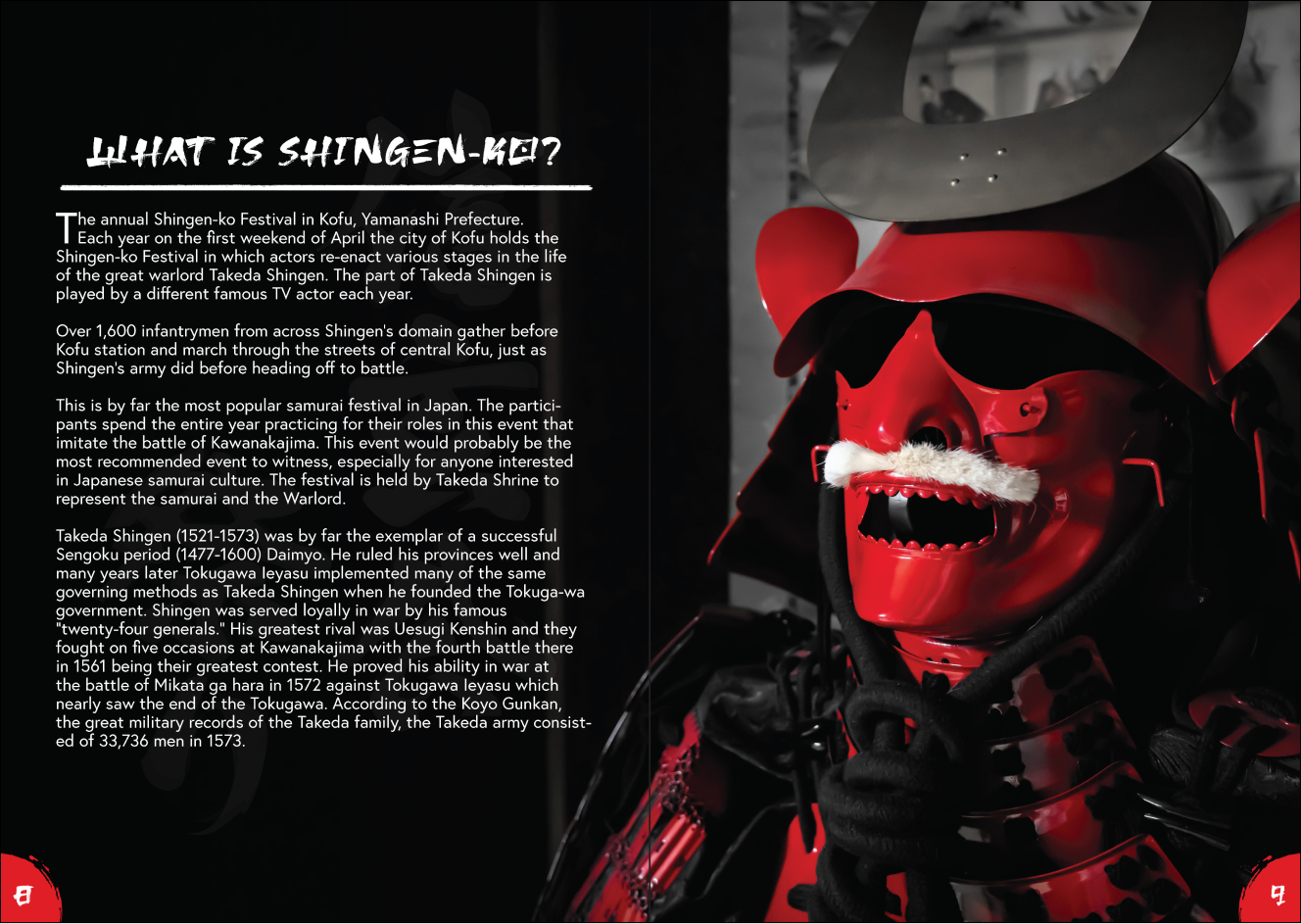
Concise & Precise
Once the design was finalized, the content was then organized and written in a clear and concise manner. The information included in the booklet covered various aspects of the festival, such as the main events, cultural performances, traditional food, and practical information for visitors. Additionally, frequently asked questions (FAQs) were included to address common queries from festivalgoers.
Scheduled events and their times and dates were also included within the booklet alongside a map of the event and where the Samurai March would take place and lead was integral for the tourists and interested participants to have a tool capable of tracking the events.

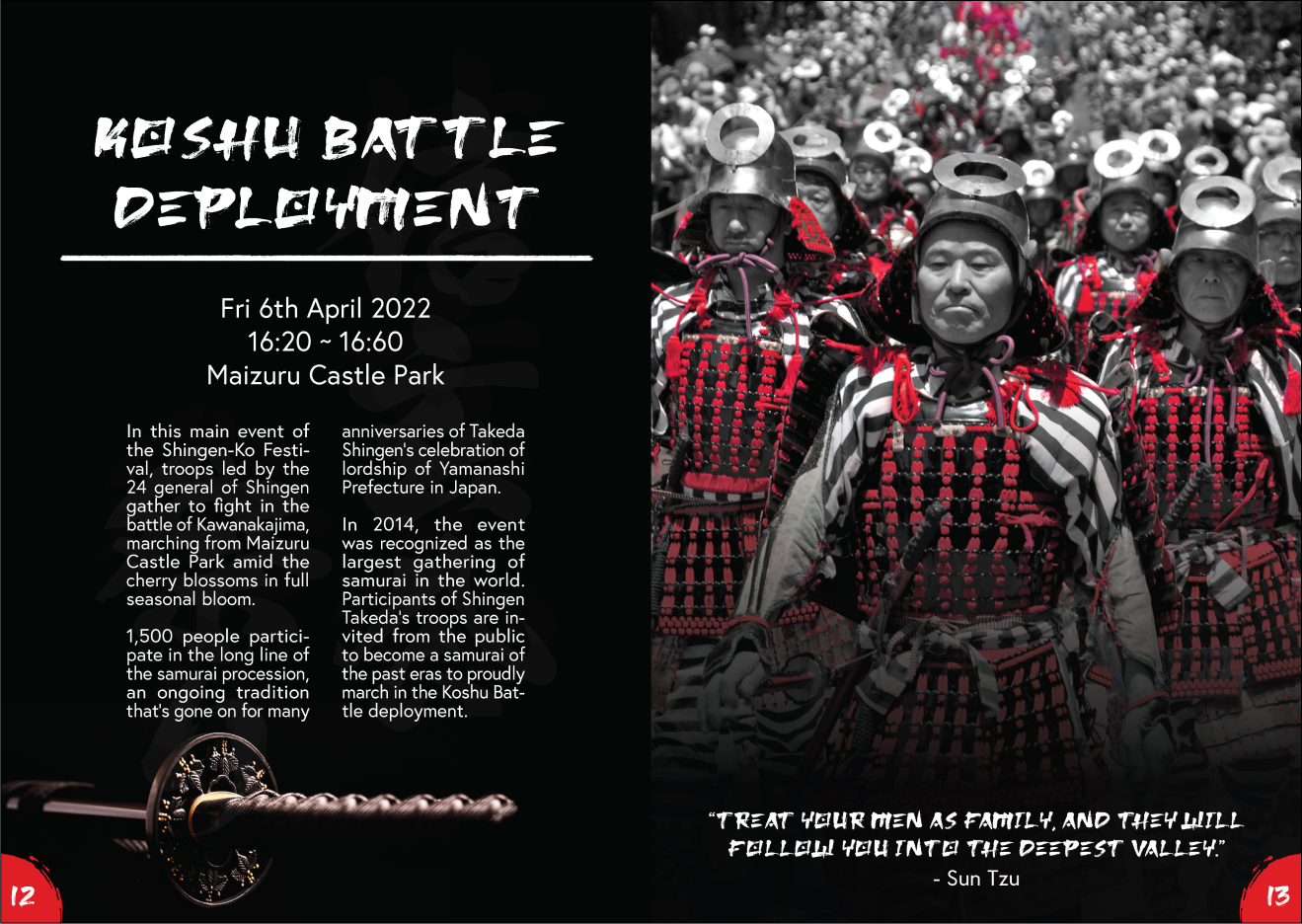

Quality Control
To ensure accuracy and quality, the content was reviewed and edited multiple times before being finalized. Care was taken to maintain historical accuracy and provide up-to-date information about the festival. Alongside the correct representation that would be featured alongside the artwork and informational texts.
Fact-checking information and providing accurate information was key to the projects success, to create historical substance within the work both symbolically and historically was priority; targeting the historical market and providing high levels of respect to the source material was an important factor.
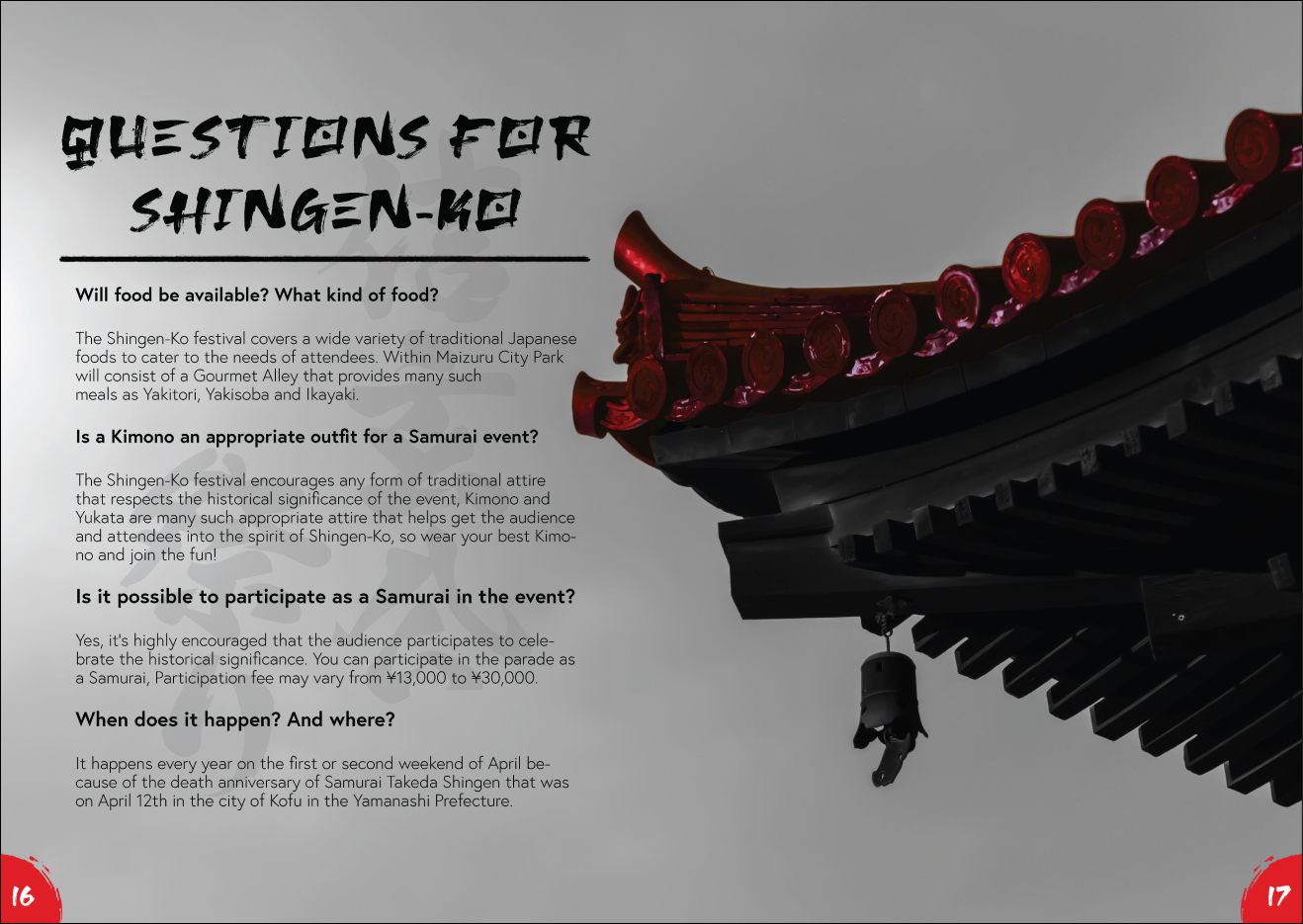
Last Steps
The final step of the project was to make sure the project was print-ready, correcting image DPI quality and selecting proper CMYK colour choices for the project alongside prepping typography files to be sent to the printer.
Theoretically, the project would now be printed using high-quality paper and ink to ensure a professional finish and then would be distributed to various locations in Kofu City, such as tourist information centres, hotels, and shops, where festivalgoers could easily access it.
